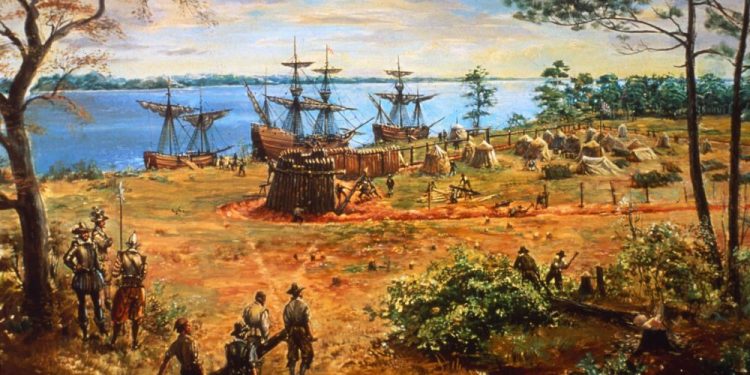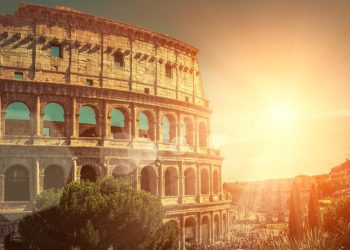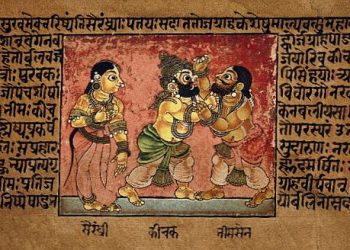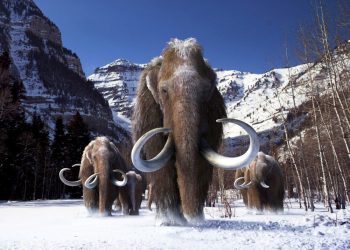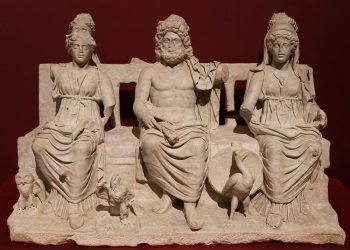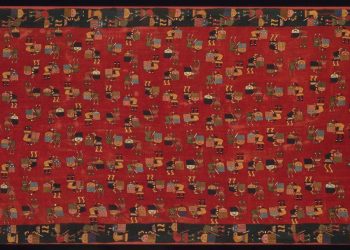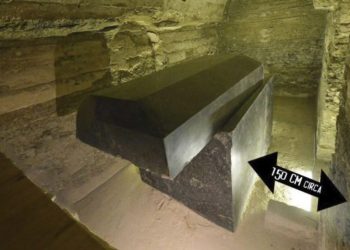Although there has been a great discussion around the roots of the New World in America, along with the domination of the Europeans in the world that they discovered during the end of the 15th century, it’s crucial to see that this colonial expansion wouldn’t have changed the history of the world if it wasn’t for 10 critical figures.
Obviously, the figures were more than 10, and their impact in colonizing the new world of the new American continent was enormous. Nonetheless, the ten people that are investigated in this article according to their work and their required methods of colonizing were the ones that changed the early outcome of American history.
The choice of the people in the list is upon the writer’s discretion, and it’s essential to understand that the historical evidence presented supports the notion of these people having a significant influence before the year 1700.
-
Christopher Columbus
In the centuries before the arrival of the newcomers, America was an indigenous place, and the early encounters that we have are from the Spanish and the Portuguese, the only people who stayed there for a long time.
Nonetheless, when Christopher Columbus arrived, he understood that this was a new world that the Europeans had to consider. However, he didn’t understand that from the beginning. Columbus started organizing voyages around the Bahamas in 1492.
Still, in reality, Columbus was stating that the new territory was a lot smaller, and that’s why people back in Europe thought he had reached Asia and that he had circled the planet.
No one was sure that this was a continent until the rest of the voyages from Columbus were completed between 1493-1504. These were needed to establish colonies of settlement, with Santo Domingo being the oldest inhabited settlement.
It was Columbus who shed light on the new world, the discoveries of the new territories, the people living there, the way the land was formed, and gave the fundamental knowledge to the Europeans so they could start future expeditions.
-
Giovanni da Verrazzano
One of the most underrated and arguably the most underappreciated person in the history of discoveries during the 16th century is Giovanni da Verrazzano.
He was behind the findings of the Atlantic coast and the territories from the Carolinas all the way to Newfoundland.
He was the person that worked to provide the Europeans with a better understanding of the new world and, although Italian, helped mainly the English to design the maps and the Spanish and Portuguese to settle their disputes.
Why is he disregarded? Because he was of similar style to Columbus’ expeditions and his discoveries weren’t as groundbreaking for the time as Columbus’ were. He was able to convince the Europeans of the benefits that the particular voyages would have, and therefore, he managed to get funded for the resources he needed by French King Francis I in 1523.
His accomplishments aren’t honored the way they should be. That’s because he wasn’t just a help to the mapmakers of the time but made an effort to understand the social structure of the indigenous cultures and pass the message to the Europeans.
-
Samuel De Champlain
Samuel de Champlain was another important figure in the formation of European colonization in the new world. The first successful settlement in the region of North America appeared in 1603 when Samuel de Champlain visited the site to assess its prospects since it could be used as a place for monopolistic fur production. After some years in Tadoussac, Champlain continued moving into Quebec in 1609 and establishing a settlement alliance with the Algonquin and the Wendat.
The fact that Champlain established this alliance played a huge role in his future commitment to conflict against the Haudenosaunee, which contributed to the hostile relations with the Dutch and the British since the latter two backed up the Iroquois.
Still, his French army and supporters stood with the Wendat. He was also working towards the interrelations of the Europeans with the indigenous people, whose support for the French would be evident later on in the wars and the economy. The first time we hear about the definition of New France was during 1627, and settlers chose Champlain as the governor of this entity that consisted of a mercantile and farming colony.
-
John Cabot
When settlers were starting to migrate to the North American world, they were totally struck by the quantities of the north Atlantic sea along with the massive amounts of fish. The first written record, published by John Cabot, a Venetian merchant, was intended to present the natural capital of the new world as people like Cabot have experienced at the end of the 15th century. That’s why he was funded by English authorities to pursue the expedition, since he was capable of putting his thoughts and his experiences on paper and inform thousands of people.
Not only did he make a great effort to understand the North American region, but he also reached the coast of Newfoundland and even showed the Europeans the massive fishing potential in the northwest Atlantic sea.
Although Cabot had permission and was financed, the English weren’t really focused on the territory from the beginning, such as the Portuguese, who thought it was their part of their world after the Treaty of Tordesillas.
French fishers from the province of Normandy and the Portuguese were the Europeans that were immediately trying to exploit the environmental resources of the territory. Still, no one is sure that this would be possible without the contribution of John Cabot.
-
Jean Cartier
Jean Cartier was well-aware of the Newfoundland resources even before John Cabot, but his problem was that he didn’t reliably report this reality. Still, he also focused on other parts of today’s Latin America. He is stated to have a connection with the North American fishery long before he arrives in Newfoundland. Generally, he wasn’t new on the continent since he had been there but in the Brazilian waters.
Regardless of his work for the mapmakers, the discoveries, and the whole European initiative of colonizing the Atlantic world, he is acknowledged, and that’s why we have the Jean Cartier Bridge in Montreal or other statues and monuments in the French communities (he was a French native from Brittany). He made three trips to North America, and after that, he wrote three journals published in Italian and English (1545).
We can look at many valuable narratives, mainly the map of Hochelaga, which gives us the view of the European mind, which was inspired by his own presentation of the new continent.
-
Vasco da Gama
Another name that has to be mentioned in the list is Vasco da Gama, one of the most influential people in the European expedition towards the new world.
Although Portuguese, he contributed to a better understanding of the whole world, even for the British, the Spanish, and the other explorers.
His work is considered one of the most important milestones. More specifically, Vasco da Gama contacted the Indian settlers and efficiently pushed the Spanish into the bilateral trading system with the Indians. What he tried to achieve was to link Europe and Asia through a significant Atlantic connection. After some useful expeditions, he did exactly that and opened the way for development in the contemporary world.
-
Amerigo Vespucci
When it comes to the actual names and the definitions of the new world and how they described the new territories the explorers had discovered, one man was responsible for creating these names and their wider distribution while also raising awareness on the new land.
His participation was so significant and crucial that America has a solid connection to Amerigo’s word, as mentioned in the country’s name. The continent referred to as the “Indies” was also created as a definition by Vespucci and his men. They would then get the word to the Spanish country and help colonial Spain develop a new dialect.
If there was one man that could claim significant influence on the adventure route of Columbus and could arguably be treated in a similar way as Christopher Columbus and could be similarly honored is Amerigo Vespucci. Only after Vespucci and Columbus, the Europeans had developed the spark of an adventure of exploring the new world. It’s not an understatement that it would take centuries for the rest of the explorers in the south to understand the whole land of America if it was ever mentioned as America hadn’t it been for the two innovators.
-
James Cook
One of the most disregarded names is that of James Cook, who was present on the Pacific coast around 1778 and managed to urge the Crown to consider settling in the region and becoming involved financially. The British then managed to get their products to China. The Spanish and the British were going at it, but when the French Revolution came into play, the two powers did not want to waste their resources and arms in the North American region.
The most important fact, however, which is not always covered in the historical description of the North Americans, he also discovered Australia and navigated New Zealand. Not only a great contributor to the expansion of the English in the New World and a great explorer that worked for the whole world. After a while, he provided a wide variety of information and presented a map of Newfoundland after leading three voyages to the Pacific region.
-
Jeanne Baret
Obviously, some women had the same intensity as most men to discover the unknown and bring their experiences back to the European world. More specifically, when it comes to the first woman to travel around the world, the name that comes to mind is the French female explorer Jeanne Baret.
The question about gender roles and women claiming some prominent positions in the adventure communities is justifiable.
Historical accounts have clearly shown the passion of Jeanne since she was one of the few women that were brave enough to disguise themselves as males.
Although she was a female who had to convince other people that she was a male and participate in the French expeditions, the experience was also challenging alone.
The best way to understand that is by reading her English biography written by John Dunmore.
-
William Bradford
This is one of the most influential people for English history and the ability of the Crown to dominate the new world during the mid of the 17th century. This isn’t only because he was one of the most efficient settlers in the untouched territory, but it’s also because he paved the way for the English settlements.
More specifically, he was the leader of the Puritans, the English Protestants that were seeking to change the church of England and actually deviate from the Roman Catholic practices, which were influencing the English after having connections with the French.
William wasn’t the leader of the Puritans in the English territory of Europe. Still, he was the separatists’ leader, who advocated to emigrate from the already-existing English colonies that were not firmly against the Catholics. That’s why he constructed one of the most significant colonies for the following centuries regarding the importance for the rest of the separatist colonies or the collaboration with other allies, Plymouth.
One of the most controversial issues in the history of humanity comes with colonization and the intense imperialistic approach to the new lands discovered in the world. During the first century of the discoveries in the unknown world, learning and searching the new continent was crucial since there were even misconceptions that this was a territory with great loot and gold for the Europeans. The adventurers mentioned in the list played a crucial role in showing the world what this new land was all about and how the Europeans should map, scale, and approach it.
References
Sheils, William Joseph (2004). “Matthew, Tobie (1544? –1628)”. Oxford Dictionary of National Biography. Oxford University Press.
William R. Nester, The Great Frontier War: Britain, France, and the Imperial Struggle for North America, 1607–1755 (Praeger, 2000) p, 54.
David J. Weber, “The Spanish Borderlands, Historiography Redux.” History Teacher 39.1 (2005): 43–56.
Wiecek, William M. (1977). “The Statutory Law of Slavery and Race in the Thirteen Mainland Colonies of British America.” The William and Mary Quarterly. 34 (2): 258–280.
Jaap Jacobs, The Colony of New Netherland: A Dutch Settlement in Seventeenth-Century America (2009)
Join the discussion and participate in awesome giveaways in our mobile Telegram group. Join Curiosmos on Telegram Today. t.me/Curiosmos



